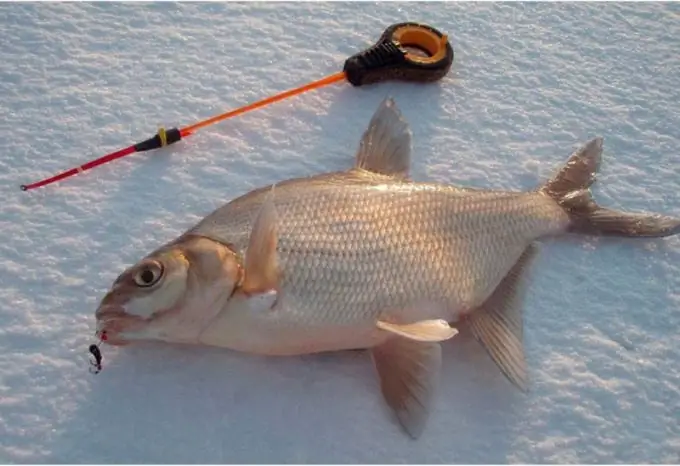With the arrival of the first spring month, the ice on the reservoirs gradually begins to melt and the water is saturated with oxygen every day. Breams, like most other freshwater fish, slowly leave their wintering grounds and begin to actively feed.

Compared to the winter months, fishing in March can be more catchy, as fish starving during the winter rises from the depths and travels throughout the water area in search of food. Such a representative of cyprinids, like bream, is also no exception - it comes close enough to the coastal zone, begins to ply in bays and tributaries. Most often, March bream can be caught at relatively shallow depths - from two to four meters.
What time of day does bream bite?
March bream is especially active in the morning, about an hour after sunrise. Sometimes bream can be successfully caught in the second half of the day, but, as a rule, at this time the bite lasts no longer than two hours. At night, the fisherman has few chances, since after dusk the bream usually prefers to descend to a depth of four to six meters.
Tackle
It is best to catch bream in March with an open reel rod equipped with a key brake. Jigs for catching this fish should be used of medium and small sizes, moreover, those that clearly stand out against the background of the water. Going on a fishing trip, it is advisable to adhere to the following rule: if the weather is cloudy, you need to use light-colored jigs, if it is clear - accordingly, you need to use dark jigs. Fishing tackle, which is used when fishing for bream in March, can be of various forms: "ant", "pellet", "goat" and others.
When fishing for bream in early spring, you should use only proven, high-quality fishing line, since the fish at this time of the year, having swallowed the bait, resists for a very long time and stubbornly. The optimum thickness of the line when fishing for specimens weighing up to one kilogram should be at least 0.12 millimeters.
Nozzle and groundbait
Most chances of catching March bream are from a fisherman who uses a large bloodworm as a hook attachment. It is advisable to plant bloodworms at once in three pieces, the larva should be pierced in the middle or under the head. A good alternative to the nozzle can be red worms, maggots, chernobyls (wormwood moth larvae).
In order to prepare the "correct" bait for catching bream in early spring, the following ingredients should be thoroughly mixed in a container: sunflower cake (200 grams), rye or wheat bread crumbs (400 grams), milk powder (100 grams). Being directly on the reservoir, one more ingredient must be added to this mixture - 200-300 grams of large bloodworm.






